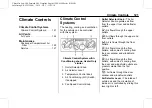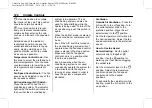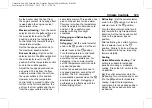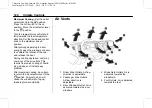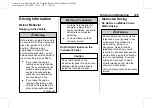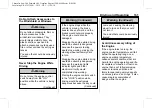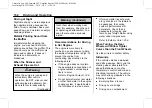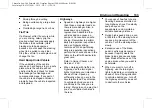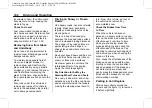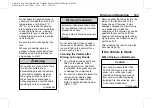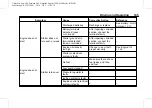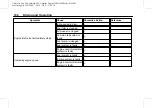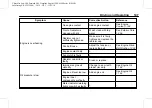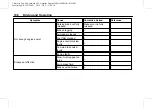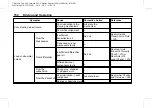
Chevrolet Low Cab Forward 6.0L Gasoline Engine 3500/4500 Series (GMNA-
Localizing-U.S.-12533400) - 2019 - CRC - 11/19/18
Driving and Operating
135
Braking Techniques
For the most effective braking and
for maximum life from brake system
components, follow these
suggestions when possible:
.
Apply the brakes gradually as
road and load conditions permit.
Reduce pedal pressure as
speed drops so that a very light
pressure is used at the end of
the stop.
.
Do not pump the brake pedal as
this will only deplete the vacuum
reserve or the hydraulic brake
booster (HBB) accumulator
reserve.
.
To get maximum braking while
maintaining vehicle control, use
a "squeeze" braking technique.
Do this by pushing on the brake
pedal with steadily increasing
pressure. If possible, steer
around obstacles when there is
not enough room to stop.
Brake System Warning Light
Caution
If the brake system warning light
comes on during operation, have
brake system checked
immediately.
Refer to
When the Brakes Do Not Work
{
Warning
It is very dangerous to suddenly
pull the parking brake lever all the
way while moving at high speed.
Reduce speed first by shifting
down and then gradually pull the
parking brake lever.
You and others could be seriously
injured.
If the brakes do not work in an
unexpected situation, promptly shift
down from D6, D4, 2nd and then to
1st gear using the selector lever to
reduce the speed and gradually pull
the parking brake lever to stop the
vehicle on the side of the road while
firmly holding on to the steering
wheel.
See
.
Riding the Brake
{
Warning
"Riding the brake" by resting your
foot on the pedal, when you do
not intend to brake, can overheat
the brakes and wear out the
brake linings faster. This may also
damage the brakes and will waste
fuel. It can also result in reduced
braking performance.
You and others could be seriously
injured.

